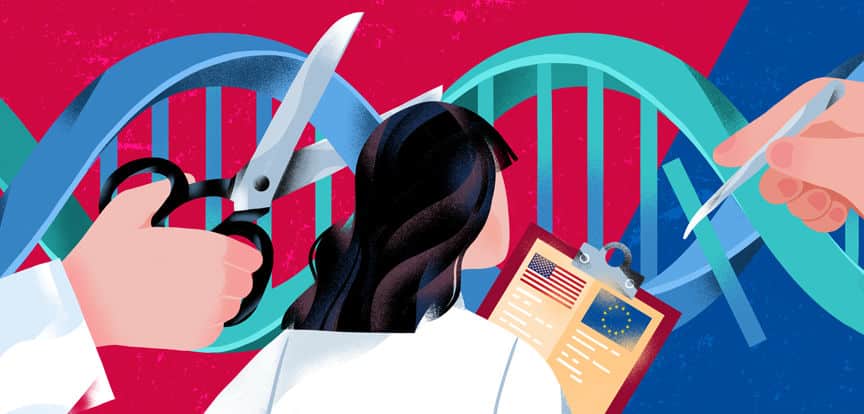Newsletter Signup - Under Article / In Page
"*" indicates required fields
CRISPR-Cas9 genome editing has changed the game for gene therapy, but carries safety risks when cutting DNA. The new U.S. firm Epic Bio aims to reduce these risks by targeting epigenetic controls on gene expression.
The development of the genome-editing tool CRISPR-Cas9 caused a paradigm shift in the biotech industry because it made it easier than ever to make small edits to the genetic code. The tool is also being tested in clinical trials to see if it can form the basis of gene and cell therapies for conditions including genetic blindness, cancer and blood disorders.
However, CRISPR-Cas9 gene editing also has its limitations. One is that the Cas9 protein used to cut DNA molecules can also make permanent cuts in unexpected parts of the genome, which could be dangerous for the cell. Another is that the CRISPR-Cas9 machinery is too large to deliver into the patient’s body using adeno-associated viral (AAV) vectors, the most common delivery method for gene therapies.
To overcome the obstacles for CRISPR-Cas9 gene editing, the startup Epic Bio was launched in July 2022 with an impressive Series A round worth $55 million. The firm, based in San Francisco, U.S., is developing gene therapies based on editing the epigenome, a biological system that cells use to control which genes become proteins.
Epic Bio’s therapies involve fusing together a protein that binds to DNA with a so-called modulator protein that can make epigenetic changes to the DNA molecule. This construct is directed to a target site in the genome using a customized guide RNA molecule. Epic Bio’s technology is dubbed Gene Expression Modulation System, or GEMS for short.
“CRISPR-Cas9 binds and cuts the DNA whereas GEMS binds and modifies the chemistry of DNA without changing the genetic code,” explained Amber Salzman, CEO of Epic Bio. “This allows fine-tuning gene expression and avoids the risks of cutting DNA.”
Epic Bio is deploying its epigenome-editing therapies in a range of rare diseases such as facioscapulohumeral muscular dystrophy, heterozygous familial hypercholesterolemia, and forms of retinitis pigmentosa. In each case, the therapy is designed to correct harmful epigenetic changes to genes that are linked to the disease.
Epic Bio aims to prepare for clinical testing by the end of 2023. According to Salzman, earlier generations of gene therapy technology have struggled to treat these diseases as they aren’t precise enough to hit the target site in the genome.
“By leveraging CRISPR and sequence-specific guide RNAs to home to target sequences, Epic Bio can address limitations of specificity,” said Salzman. “Similarly, robust and durable activators and suppressors are needed to drive desired target gene behaviors. Epic Bio has the largest library of such precise epigenetic modulators to address this challenge.”
Another problem with gene editing therapies is that it’s tough to deliver them to the patient in vivo because AAV vectors can only carry a small amount of genetic cargo. To get around this problem, Epic Bio licensed a tiny DNA-binding protein called CasMINI from Stanford University, which allows the company’s gene therapies to fit on a single AAV vector.
“Today, AAV is the most validated vector to deliver genetic medicine in vivo, and our therapies can fit in an AAV,” explained Salzman. She added that the main alternative delivery method, via lipid nanoparticles, is currently limited to targeting the liver.
“Because of the small size of CasMINI, that leaves more room for guide RNAs and multiple modulators that could perhaps regulate multiple genes at a time.”
Epic Bio is one of several biotech players that have kicked off in the epigenome editing space. Chroma Medicine launched in late 2021 with a neat $125 million investment. This was swiftly followed by Tune Therapeutics, which debuted with $40 million. As it launched, Chroma Medicine also acquired another epigenome editing specialist, the Italian firm Epsilen Bio.
Epigenome editing remains an emerging therapeutic field with a lot of challenges. For example, it’s crucial to make sure the target sequence is verified when making epigenetic changes, and companies need to avoid the body’s own DNA repair systems reversing the edits. Nonetheless, the technology has a lot of potential to treat conditions that have been out of reach of traditional gene therapies.






